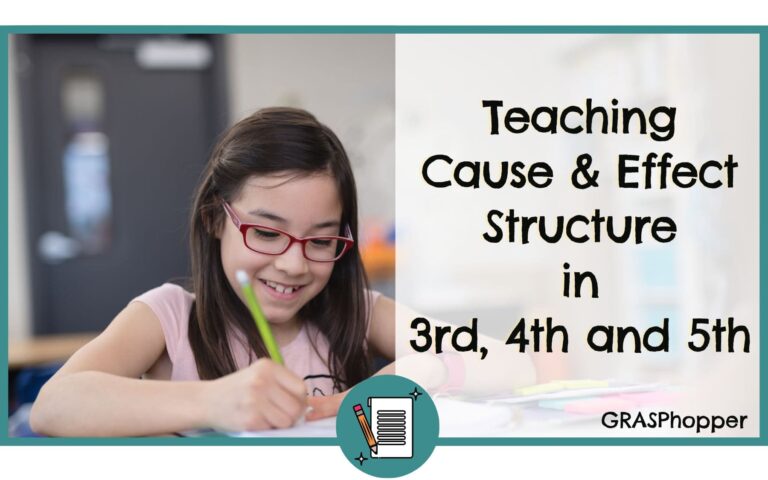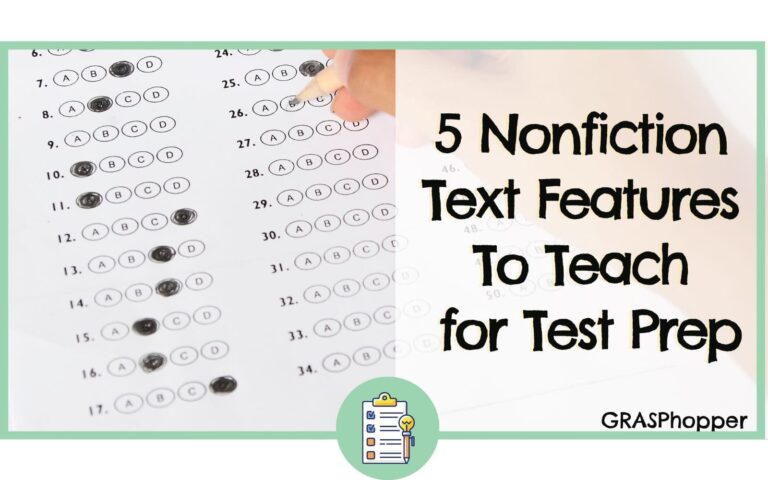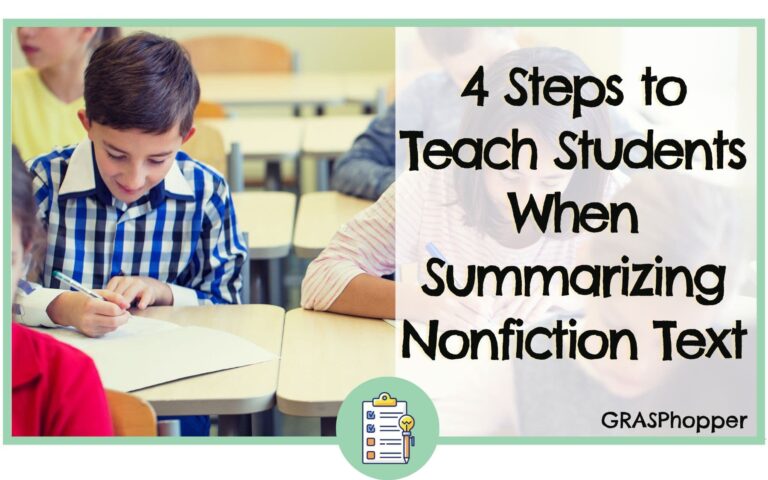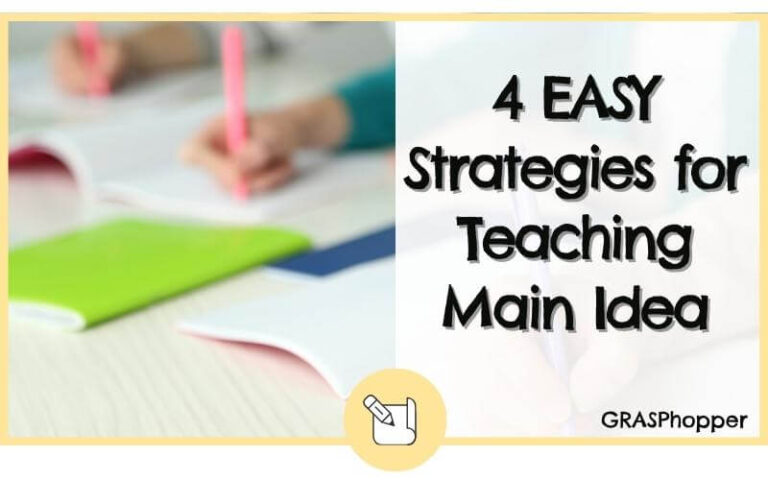
I always have a hard time explaining to my students how to retell the story using the beginning, middle and end. I just hope I don’t get stuck in the middle!
Do your students ever get stuck retelling only one part of a story?
Hop on down to learn the 3 secrets that will get your young students unstuck and on a smooth journey to retelling complete stories.
⭐️Secret # 1: Story Retell Foundational Vocabulary
Know (the vocabulary) before you Go!
Imagine this, you finish reading a story and you ask your students to retell what happened at the beginning. One student responds, “It was good!”
Then you think, well, that didn’t answer my question! It could be that the student isn’t understanding the foundational story retell vocabulary words.
WHAT IS VOCABULARY?
Familiar words that are known or used by a person in order to understand and communicate effectively.
WHY TEACH STORY RETELL VOCABULARY?
Understanding the foundational vocabulary used during story retell is a key component to being a good storyteller. When you ask your learners what happened in the beginning, they have to know what that means in order to give you a logical answer.
Sometimes we assume knowledge, especially when the vocabulary we are using aare terms they hear ALL THE TIME!
But just because we use the words, does not mean students have a true understanding of them.
Now you may be thinking…. THERE ARE SOOO MANY WORDS! WHICH ONES DO I TEACH?
We recommend starting with these:
🚨 Not every educator is going to use the same exact terms when it comes to story retell. It’s helpful to expose and teach your learners words that have similar meanings AKA synonyms.
Initial Story Retell Vocabulary:
- Beginning
- Student friendly definition: The first part of a story
- Synonyms: First, At the start, In the beginning
- Middle
- Student friendly definition: The center part of a story
- Synonyms: Next, Then, After
- End
- Student friendly definition: The part when the story is almost over.
- Synonyms: Last, Finally, At the end
Once you’ve taught these terms, your students will be better equipped to answer your story retell questions because they know what you’re talking about.
📣 ”What happened at the beginning?”
📣 ”Then what?”
📣 ”What about the end?”
✅ TIP: Not sure how to implement teaching story retell vocabulary words with your students? Start by using pictures to identify these vocabulary terms.
Try using our foundational story retell resource where students can practice identifying and using the terms beginning, middle, and end. To further engage your learners, the story retell activities come in a variety of seasonal and themed units as well!
⭐️ Secret #2: Foundational Sequencing Skills
Have you ever asked a student to tell you about the story they just read, and their response leaves your head spinning?
One culprit is that students may not understand the importance of a sequence.
WHAT IS SEQUENCING?
Sequencing is knowing how to put ideas, information or pictures IN A LOGICAL ORDER. Before students can sequence, they MUST understand secret #1, the vocabulary. Once they know the vocabulary, it’s time to put it to good use and learn to sequence.
WHY DO YOUR STUDENTS NEED TO KNOW HOW TO SEQUENCE?
Sequencing skills are important so that we are able to talk about things that happened in a cohesive manner. It’s also a way for us to show what we know and have people understand us.
That’s not the only reason! Your students rely on sequencing in order to perform tasks that must be done in a specific order. Steps even as simple as eating. For instance, first you need a fork, then you bring the food to your mouth and last you chew.
YES, sequencing happens all day, everyday.
✅ TIP: When teaching sequencing, start with simple, sequencing pictures to help students to understand the logical order. This can include pictures of everyday routines that a child might experience.
Try out the Back to School Story Retell Activities where students can learn and practice how to sequence routines and stories they experience at school!
⭐️ Secret #3: Foundations of Working Memory
Remember the student with the head-spinning story retell? Another culprit could be that they just cannot hold on to the information they read or heard from the story.
This is a challenge in the area of working memory.
WHAT IS WORKING MEMORY?
The ability to hold onto and manipulate information within a short period of time.
WHY IS WORKING MEMORY IMPORTANT FOR STORY RETELL?
Working memory is a prerequisite skill for story retell. Students need to be able to hold onto the presented information and then express that information in a logical manner.
Sometimes students are able to remember the beginning and the end of a story while forgetting the middle part. The reason for this? Your students might not have a strong enough working memory to remember all of the parts of the story.
Building foundational knowledge through secret #1, vocabulary, and secret #2, sequencing skills allows children to take off some of the informational load to help them remember all of the parts of a story. It will allow learners to focus on the salient information instead of vocabulary and concepts that should be known to them at their age.
✅ TIP: Feeling overwhelmed? Don’t worry, we have you covered! Start by providing your learners with short pieces of information accompanied by pictures. Your students will be telling stories in no time!.
Our Story Retell resources are leveled, so that you can work through all of these parts with texts of varying length. They contain short stories as well as story paragraphs.
After learning about the foundational skills for story retell, you are now prepared to see where the breakdown is happening with your students!
Whether you are a teacher, educator, speech therapist, or parent, GRASPhopper wants to make sure everyone understands the steps to teach the foundational skills of story retell, so we’ve created a video lesson!
▶️ Watch GRASPhopper’s step-by-step teaching video as a guide.
- The video will not only increase your knowledge of story retell, but can be used directly with your students too!
- This video is filled with opportunities for students to LEARN, with MODELS & EXAMPLES, and tons of opportunities to PRACTICE!
THANKS FOR HOPPING BY!
What do your students struggle with most when it comes to retelling stories?












